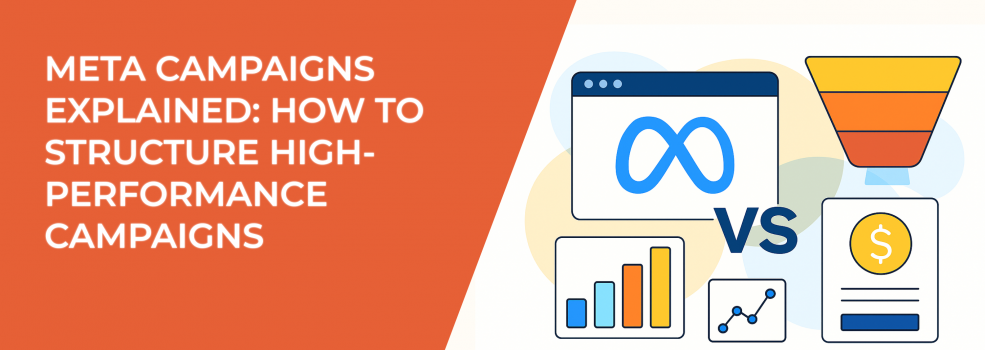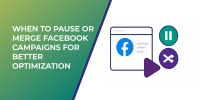If you’ve been running ads on Facebook and Instagram for any length of time, you’ve probably noticed how much the platform has changed.
Under the broader Meta umbrella, the ad ecosystem has become more sophisticated. Algorithms are smarter. Targeting options are more dynamic. And performance doesn’t just come from what you promote — it comes from how your campaign is built from the ground up.
So how can you make sure your campaigns are not just live but truly high-performing?
Let’s break it down.
Why campaign structure matters more than ever
For many advertisers, especially small business owners balancing a lot, campaign setup can feel like just another task to check off. Pick a goal, choose an audience, upload a creative, and hit publish. Simple, right?
The problem is, this rushed approach often leads to poor results and wasted budget.
If your ad set is structured too narrowly or misaligned with your objective, you may even see the dreaded “Ad Set May Get Zero” warning.
The things is, Meta’s ad delivery system is driven by machine learning. And like any smart system, it needs clear, consistent input to work effectively. A well-structured campaign gives Meta the signals it needs to understand:
-
Who your best customers are,
-
How to find more people like them,
-
Where and when to deliver your message.
Think of it like coaching a promising athlete. If their training is all over the place, even the most talented person won’t perform at their best. The same goes for your campaigns — structure is what helps the algorithm train properly, spend your budget wisely, and improve performance over time.
Campaign objective: set the North Star
Every campaign starts with a goal. And when you choose a campaign objective in Meta Ads Manager, you’re telling the system exactly what kind of result you’re aiming for.
Everything starts with your campaign objective.
Meta gives you several options, such as:
-
Sales,
-
Leads,
-
Traffic,
Awareness,
-
Engagement,
-
App promotion.
Each objective tells Meta’s system to go after a different type of user behavior. And choosing the wrong one means your ads could be delivered to the wrong people.
For example, if you’re running an online bookstore and want to sell books, you might think “Traffic” is a good objective. More visitors means more chances to sell, right? Not quite. Meta will optimize for people who are likely to click — not necessarily those who buy. So you could end up with lots of clicks, but few checkouts.
Instead, selecting “Sales” and optimizing for purchases tells the system to focus on users who are more likely to actually buy.
Before you hit publish, ask yourself:
What action do I really want people to take?
Match your objective to your business goal. That’s how you get Meta working in your favor.
Not sure which objective to choose? Our guide on Meta Ad Campaign Objectives breaks down what each one does and when to use it, making this step much easier.
Ad set level: the real strategic playground
Your campaign objective sets the direction — but the ad set is where the real strategy happens. This is where you define:
-
Who sees your ad,
-
How much you spend,
-
When your ads run,
-
Where your ads are shown.
Each of these choices plays a big role in how your campaign performs. Let’s break it down.
1. Audience signals: guide, don’t restrict
Not long ago, advertisers had to layer interests, behaviors, age groups, and income brackets to find their ideal customer. Today, Meta’s algorithm can do much of that targeting for you if you give it room to work.
For instance, if you’re selling skincare products, targeting people interested in "skincare" or "clean beauty" is a good start. That’s a clear signal. But if you also filter by device type, income level, relationship status, and a dozen other traits, you might be narrowing your audience too much.
When your audience is too small or specific, the algorithm doesn’t have enough space to test, learn, and optimize.
Instead, use 1–2 key interests or behaviors and let Meta’s system explore. If your pixel has solid conversion history, it can help the algorithm find more users like your existing buyers.
Want to build more precise audiences without overcomplicating things? Start with our guide on how to define a target audience for marketing or dive into Facebook Ad Targeting 101.
2. Budget allocation: have a plan
Budget strategy makes a huge difference — especially during testing. Meta gives you two options:
-
Advantage Campaign Budget (former CBO): Meta distributes your budget across ad sets based on performance.
-
Ad Set Budget Optimization (ABO): You control how much each ad set spends.
Here’s a smart strategy:
-
Use ABO when you’re testing audiences or creatives so you can compare them fairly.
-
Once you find a winner, switch to CBO to let Meta scale the top performers efficiently.
Also, avoid spreading your budget too thin. For example, if you’re running 5 ad sets with a total budget of $10/day, each ad set only gets $2, which usually isn’t enough for the system to learn anything meaningful.
Fewer, better-funded ad sets will almost always outperform many small ones.
3. Schedule and placements: automate with intention
Meta recommends using Advantage+ placements (formerly automatic placements), and in most cases, it’s a good idea. It allows your ads to appear across Facebook, Instagram, Messenger, and more — wherever performance and cost are most efficient.
That said, keep an eye on performance data. If Instagram Reels are driving strong engagement and Facebook Stories aren’t, consider testing Reels-focused creatives or a placement-specific ad set.
Same goes for scheduling. Look at when your audience is most active. Are weekdays better than weekends? Are your best results happening in the evenings? Setting a custom schedule helps ensure your budget is spent when your audience is most likely to engage.
The creative: the final lever
No matter how well your campaign is structured, your creative is what people actually see. It’s the face of your brand. And it needs to grab attention quickly.
Even the most advanced targeting won’t help if your creative falls flat. Strong-performing ads usually get three things right:
-
Clear message – within seconds, people should understand what you’re offering, why it matters, and what to do next.
-
Native design – ads should blend into the feed, not stick out like a billboard. Use vertical video for Stories, casual captions, and visual styles that match the platform.
-
Strong hook – your first few seconds matter most. Start with a bold statement, question, or benefit that makes people want to keep watching or reading.
A good way to test your creative:
-
Does it work without sound?
-
Can someone understand it on a phone screen?
-
Would it still make sense in a different format, like a square or vertical layout?
Also, keep your creative testing simple. Don’t overwhelm the algorithm with 10 different versions. Start with 2-4 variations, measure what works, and build from there.
You can also boost your creative production by experimenting with AI. Explore the best AI text and image generators in 2024 to speed up ad creation and test new concepts.
Structuring for learning: don’t reset the algorithm
Here’s a common mistake: changing key settings mid-campaign.
If you edit your campaign objective, audience, or bidding strategy while it’s running, Meta resets the learning phase, which can hurt performance.
Instead of editing live campaigns, duplicate them. Create a new version for testing while your original continues gathering results.
This way, you preserve your historical data and give the new version a clean slate.
Let the dystem learn, but stay involved
Meta’s system can do a lot, but it still needs your input, especially in the early days of a campaign.
During the learning phase (usually the first 50 conversions per ad set), it’s normal to see ups and downs. Don’t panic. But do pay attention.
Ask yourself:
-
Which placements are spending most of the budget?
-
Is one audience clearly outperforming others?
-
Are my click-through rates going down or costs going up?
Use this data to make small, smart changes. Try a new creative, update your ad copy, or adjust your schedule. Optimization is an ongoing process, and curiosity is your best tool.
Final thoughts
There’s no magic formula for success with Meta ads. But a strong campaign structure gives you the best foundation.
It’s not just about getting ads live. It’s about creating a system that learns, adapts, and improves alongside your business.
Before you launch your next campaign, ask yourself:
-
Am I giving Meta the right signals to work with?
-
Is my campaign aligned with my actual business goals?
-
Is everything set up to help the system learn, or am I just hoping it performs?
High-performing campaigns aren’t a lucky break. They’re the result of smart planning, clear goals, and a willingness to keep testing and improving.
And now, you’re ready to build one.

